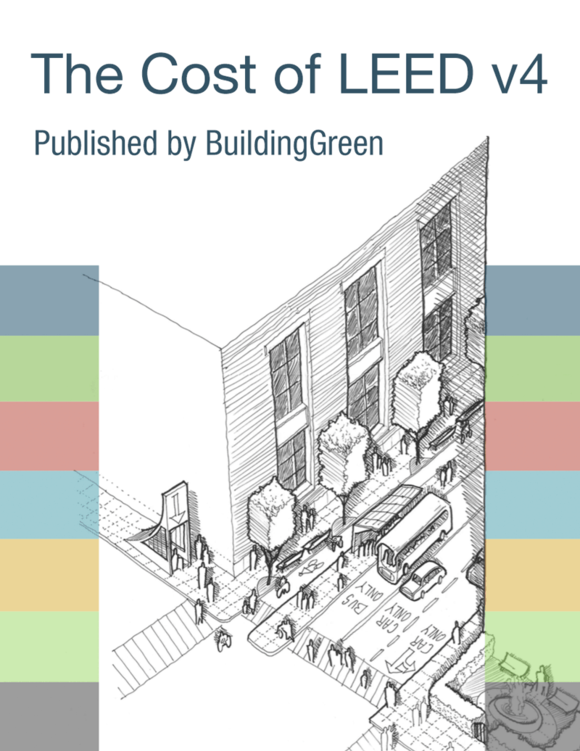LEEDuser’s viewpoint
Frank advice from LEED experts
LEED is changing all the time, and every project is unique. Even seasoned professionals can miss a critical detail and lose a credit or even a prerequisite at the last minute. Our expert advice guides our LEEDuser Premium members and saves you valuable time.
Credit language
Intent
To promote occupants’ productivity, comfort, and well-being by providing high-quality lighting.
Requirements
Provide dimmable or multilevel lighting for 90% of all regularly occupied spaces in staff areas.
For at least 75% of patient sleeping rooms, provide lighting controls that are readily accessible from the patient’s bed. In patient rooms with more than one patient, the controls must be individual lighting controls. Exceptions include in-patient critical care, pediatric, and psychiatric patient rooms.
India ACP: Interior Lighting
I. Projects in India may, in all regularly occupied spaces, meet or exceed the lower
illuminance levels listed in the Bureau of Indian Standards (BIS) code -- IS 3646 (Part 1): 1992, Table 1- Recommended Illumination.
See all forum discussions about this credit »
What does it cost?
Cost estimates for this credit
On each BD+C v4 credit, LEEDuser offers the wisdom of a team of architects, engineers, cost estimators, and LEED experts with hundreds of LEED projects between then. They analyzed the sustainable design strategies associated with each LEED credit, but also to assign actual costs to those strategies.
Our tab contains overall cost guidance, notes on what “soft costs” to expect, and a strategy-by-strategy breakdown of what to consider and what it might cost, in percentage premiums, actual costs, or both.
This information is also available in a full PDF download in The Cost of LEED v4 report.
Learn more about The Cost of LEED v4 »
Addenda
4/21/2023 – Updated: 5/9/2023
Rating System Correction
Description of change: In item 3. Lighting Control and Healthcare (BD+C only), replace "occupant" with "all regularly occupied"
Under Beta Update, revise the 5th paragraph to read as: "The previous option for lighting control has been simplified to a single requirement for dimmable or multilevel lighting in regularly occupied spaces. Projects no longer have to differentiate between individual and shared multi-occupant spaces. All lighting controls can be shared (individual lighting controls are not required)."
Under Step by Step Guidance, revise Step 4 to read as:
"Design lighting to meet the credit requirements for lighting control.
Identify all regularly occupied spaces in the project.
Design lighting controls for each of these spaces to meet the credit requirements.
Add "regularly" to the first bullet under Required Documentation
Internationally Applicable: No
4/21/2023 – Updated: 5/9/2023
Reference Guide Correction
Description of change: In item 3. Lighting Control and Healthcare (BD+C only), replace "occupant" with "all regularly occupied"
Under Beta Update, revise the 5th paragraph to read as: "The previous option for lighting control has been simplified to a single requirement for dimmable or multilevel lighting in regularly occupied spaces. Projects no longer have to differentiate between individual and shared multi-occupant spaces. All lighting controls can be shared (individual lighting controls are not required)."
Under Step by Step Guidance, revise Step 4 to read as:
"Design lighting to meet the credit requirements for lighting control.
Identify all regularly occupied spaces in the project.
Design lighting controls for each of these spaces to meet the credit requirements.
Add "regularly" to the first bullet under Required Documentation
Internationally Applicable: No
4/9/2021 – Updated: 4/19/2021
Rating System Correction
Description of change: Revise Healthcare requirements to:
Provide dimmable or multilevel lighting for 90% of occupant spaces in staff areas.
For at least 75% of patient sleeping rooms, provide lighting controls that are readily accessible from the patient’s bed. In patient rooms with more than one patient, the controls must be individual lighting controls. Exceptions include in-patient critical care, pediatric, and psychiatric patient rooms.
Internationally Applicable: No
11/9/2020 – Updated: 2/3/2021
Form Update
Description of change: Updated to align with v4.1 November 2020 Addenda
Internationally Applicable: No
See all forum discussions about this credit »
Documentation toolkit
The motherlode of cheat sheets
LEEDuser’s Documentation Toolkit is loaded with calculators to help assess credit compliance, tracking spreadsheets for materials, sample templates to help guide your narratives and LEED Online submissions, and examples of actual submissions from certified LEED projects for you to check your work against. To get your plaque, start with the right toolkit.


